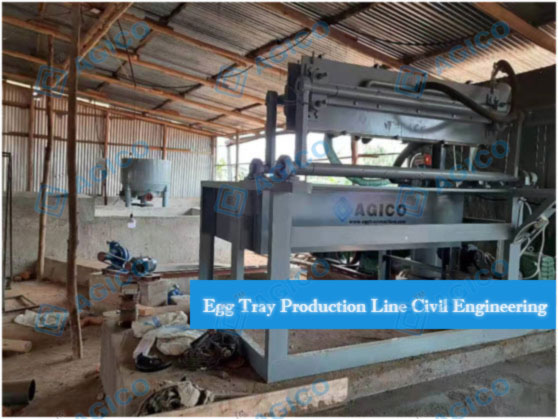Overview of Pulp Molding Machine Assembly Process
Pulp molding machines are specialized equipment used to produce a wide range of sustainable packaging solutions, including egg cartons, food trays, and protective packaging materials. These machines are designed to efficiently and effectively transform pulp material into finished products that are both eco-friendly and cost-effective.
In today’s world, sustainability has become a major concern for businesses and individuals alike. Companies are increasingly seeking out sustainable packaging solutions that reduce their environmental impact and meet consumer demands for eco-friendly products. Pulp molding machines offer a viable solution to these challenges, as they allow businesses to produce high-quality packaging materials using recycled and biodegradable materials.
To understand how pulp molding machines work, it’s important to have an understanding of the assembly process involved in their production. In this article, we’ll take a closer look at the pulp molding machine assembly process, including the various components and steps involved.
Pre-Assembly Preparation
- Site preparation and equipment inspection: The first step in pulp molding machine assembly is to prepare the site where the machine will be installed. This includes ensuring the site is level, has proper ventilation, and meets any electrical or plumbing requirements. The machine and all its components should be inspected to ensure they are in good condition and free from any defects or damage.
- Gathering and organizing necessary components and tools: All necessary components and tools should be gathered and organized in preparation for assembly. This includes the machine frame, molds, forming and transfer systems, and any electrical or pneumatic components. It is important to ensure that all required tools and equipment, such as wrenches, screwdrivers, and lifting equipment, are on hand and readily accessible.
- Safety protocols and precautions: Safety should always be a top priority during pulp molding machine assembly. Proper safety protocols and precautions should be established and followed, including the use of personal protective equipment (PPE) such as safety glasses, gloves, and hard hats. It is also important to follow all relevant safety regulations and guidelines, such as those outlined by OSHA (Occupational Safety and Health Administration) or other regulatory bodies.
Assembly Process
Building the machine frame The assembly process begins with building the machine frame, which serves as the foundation of the entire pulp molding machine. The frame is typically made from high-strength steel or aluminum alloy and provides the necessary support for the forming, drying, and pressing systems.
Installing the forming and drying system Once the frame is built, the forming and drying systems are installed. These systems are responsible for creating the pulp trays by molding them into the desired shape and then drying them. The forming system includes pulp tanks, pulp pumps, and molding tools, while the drying system typically consists of a conveyor belt and a drying tunnel.
Mounting the hydraulic and control systems Next, the hydraulic and control systems are mounted onto the frame. The hydraulic system is responsible for powering the various components of the pulp molding machine, such as the press and the forming system. The control system is used to regulate the machine’s operation and monitor its performance. This system includes a control panel and software that allows operators to adjust settings and track production metrics.
Electrical wiring and testing The final step in the assembly process is electrical wiring and testing. This involves connecting all the electrical components of the machine, such as motors and sensors, to the control system. Once the wiring is complete, the machine undergoes a series of tests to ensure that it is functioning properly and meets the required specifications.
Post-assembly Testing and Quality Assurance
Once the assembly process is complete, the machine must undergo rigorous testing to ensure its functionality and efficiency. Here are some essential steps in post-assembly testing and quality assurance:
Machine functionality testing: This involves testing the different components of the machine, including the forming, drying, hydraulic, and control systems. The machine should be operated to ensure that it is producing pulp products that meet the desired specifications.
Quality control and assurance procedures: These procedures involve testing the quality of the pulp products produced by the machine. This includes measuring their dimensions, weight, strength, and other properties to ensure they meet the required standards.
Troubleshooting and addressing issues: Any issues or defects identified during testing should be addressed promptly to ensure the machine is functioning at optimal levels. This may involve making adjustments to the machine’s settings, replacing faulty components, or making repairs.
